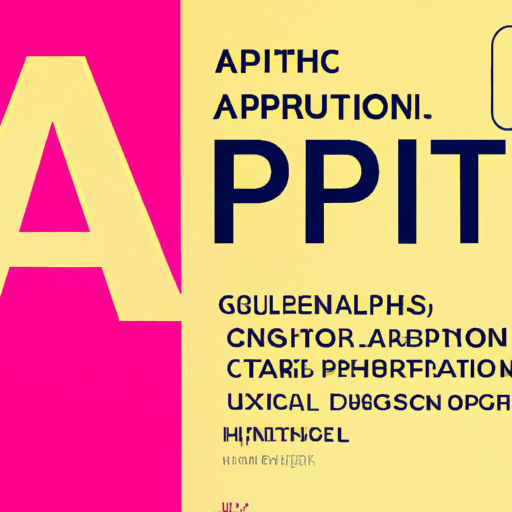
-
Table of Contents
- Typography in Digital Signage: Guidelines for Clear Communication
- The Power of Typography in Digital Signage
- Guidelines for Effective Typography in Digital Signage
- 1. Font Selection
- 2. Font Size and Hierarchy
- 3. Text Length and Formatting
- 4. Motion and Animation
- Case Studies and Examples
- 1. Times Square, New York City
- 2. Transportation Hubs
- Conclusion
Typography in Digital Signage: Guidelines for Clear Communication

Typography plays a crucial role in digital signage, as it directly impacts the effectiveness of communication. With the increasing prevalence of digital displays in various environments, it is essential to understand the guidelines for using typography effectively in this medium. This article explores the importance of typography in digital signage and provides valuable insights and guidelines for clear communication.
The Power of Typography in Digital Signage
Typography is more than just selecting a font; it is about conveying a message and evoking emotions. In digital signage, typography serves as a visual language that communicates information, captures attention, and influences behavior. Here are some reasons why typography is powerful in digital signage:
- Attention-Grabbing: Well-designed typography can capture attention and make the message stand out in a crowded environment.
- Brand Identity: Typography helps establish and reinforce a brand’s identity, creating a consistent visual experience across different touchpoints.
- Readability: Clear and legible typography ensures that the message is easily readable, even from a distance or in challenging lighting conditions.
- Emotional Impact: Different fonts evoke different emotions, allowing brands to convey their desired tone and connect with their target audience.
Guidelines for Effective Typography in Digital Signage
When designing typography for digital signage, it is crucial to consider various factors to ensure clear communication. Here are some guidelines to follow:
1. Font Selection
The choice of font significantly impacts the readability and overall message delivery. Consider the following:
- Legibility: Select fonts that are easy to read, even from a distance. Avoid overly decorative or complex fonts that may hinder readability.
- Contrast: Ensure sufficient contrast between the text and the background to enhance legibility. Dark text on a light background or vice versa is generally recommended.
- Brand Consistency: Use fonts that align with the brand’s identity and maintain consistency across all digital signage materials.
2. Font Size and Hierarchy
The size and hierarchy of the typography play a crucial role in guiding the viewer’s attention and conveying the message effectively. Consider the following:
- Size: Opt for larger font sizes to ensure readability, especially when the signage is viewed from a distance.
- Hierarchy: Establish a clear hierarchy by using different font sizes and weights to emphasize important information and guide the viewer’s reading flow.
3. Text Length and Formatting
The length and formatting of the text can significantly impact readability and comprehension. Consider the following:
- Conciseness: Keep the text concise and to the point. Avoid long paragraphs or excessive information that may overwhelm the viewer.
- Line Length: Optimal line length is around 50-75 characters per line to ensure comfortable reading without excessive eye movement.
- Text Formatting: Use formatting techniques such as bold, italics, or underlining to highlight key information and improve scannability.
4. Motion and Animation
Incorporating motion and animation in digital signage can enhance engagement and capture attention. However, it is essential to use them judiciously to avoid overwhelming the viewer. Consider the following:
- Transitions: Use smooth transitions and animations to guide the viewer’s attention and create a seamless visual experience.
- Timing: Ensure that the duration of any moving or animated text is appropriate, allowing viewers enough time to read and comprehend the message.
- Consistency: Maintain consistency in motion and animation styles across different signage to create a cohesive and harmonious visual experience.
Case Studies and Examples
Let’s explore some real-world examples of effective typography in digital signage:
1. Times Square, New York City
Times Square is known for its vibrant digital billboards and signage. The typography used in these displays is carefully selected to capture attention and convey messages effectively. Bold and large fonts are commonly used to ensure readability from a distance, while animations and transitions add an element of dynamism.
2. Transportation Hubs
In transportation hubs such as airports and train stations, clear and concise typography is crucial for providing essential information to travelers. Sans-serif fonts are often preferred for their legibility, and proper hierarchy ensures that important details such as departure times and gate numbers are easily noticeable.
Conclusion
Typography plays a vital role in digital signage, enabling clear communication and capturing attention. By following the guidelines discussed in this article, designers can create effective typography that enhances readability, conveys messages clearly, and reinforces brand identity. Remember to select legible fonts, establish a clear hierarchy, keep text concise, and use motion judiciously. By leveraging the power of typography, digital signage can become a powerful tool for engaging and informing audiences in various environments.
